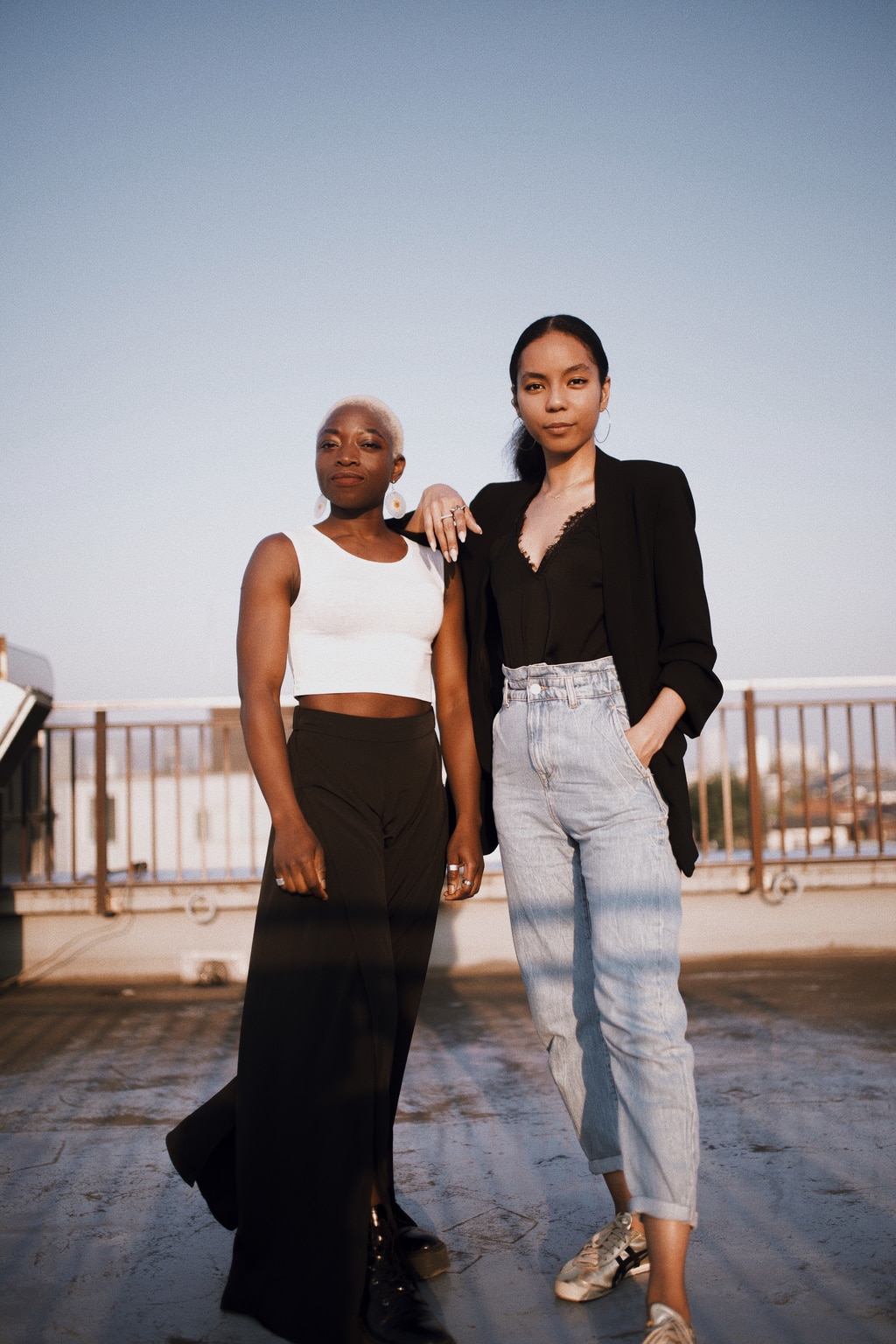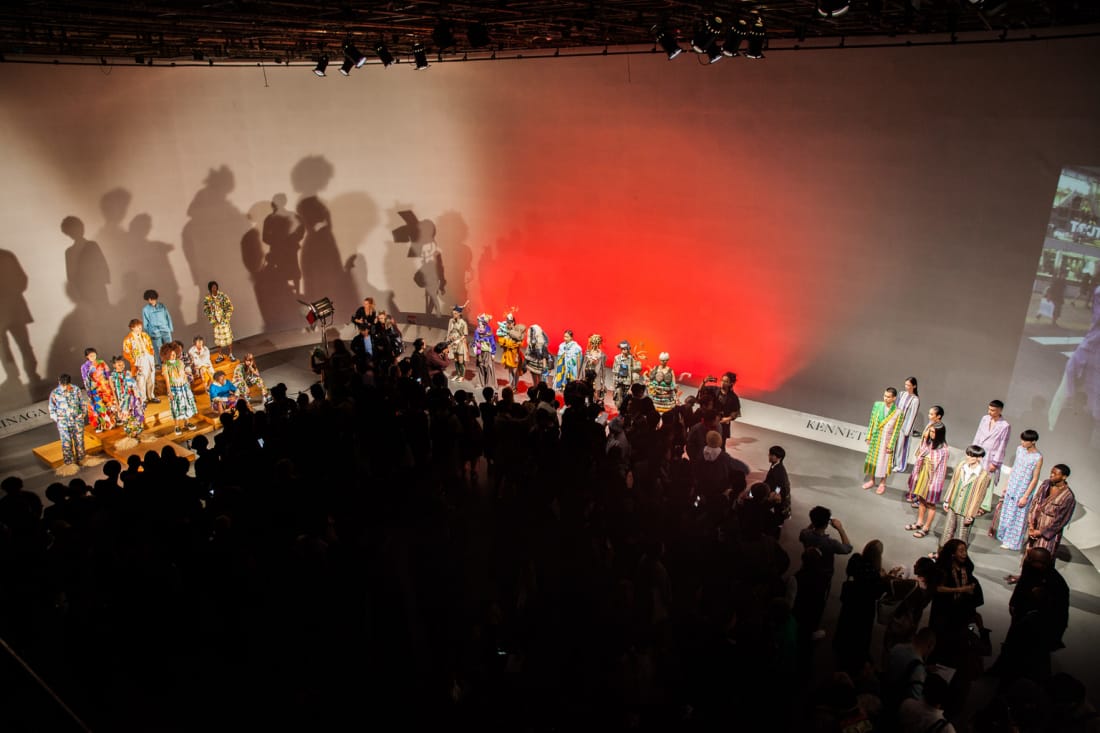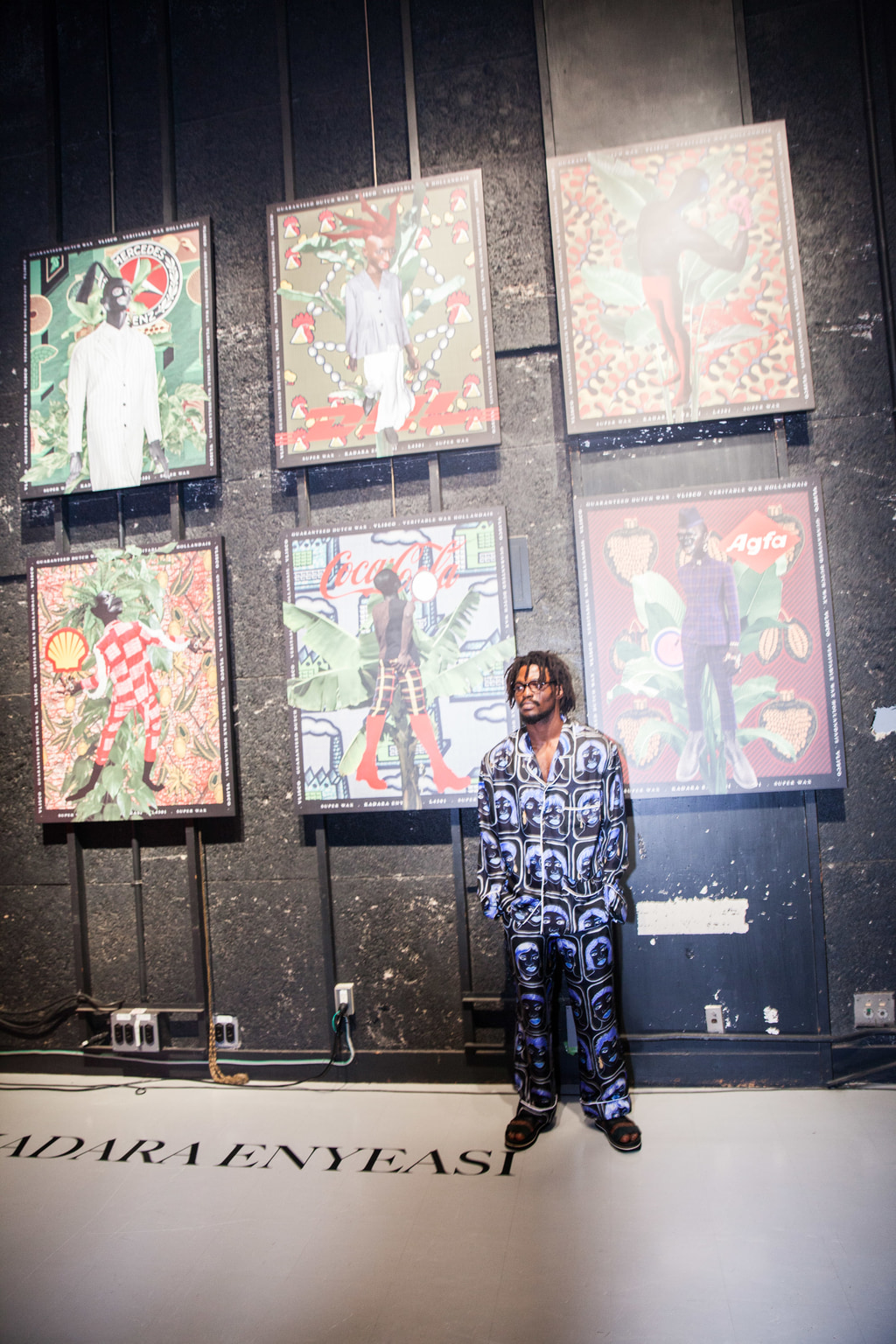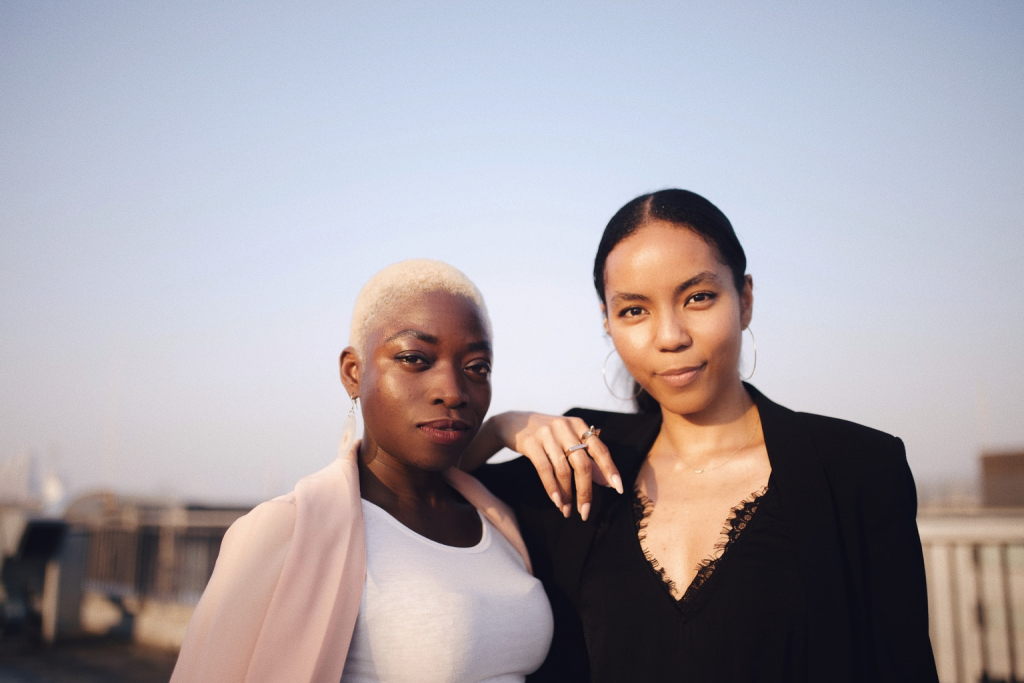There is a hidden quality to Seiko and Bukky that no amount of talking to them, no amount of uncovering their past or looking at their revolutionary creative agency – Awa’Tori – will reveal. There is something empowering seeing two independent women succeeding in an industry as harsh as fashion. For designers and artists from two continents they have a gift that makes them respond to the world in an original and remarkable way.
“Our vision is mainly to change the narrative of what the African market is. People have to realize that Africa has much to offer in terms of luxury and high-end craftsmanship. Awa’Tori is more than just fashion and culture, it’s about knowledge exchange and building a community where informations are easily accessible,” Seiko says. “At the end it is all about our story, Awa’Tori.”

Photo by Serah Alabi
Their Story
Born in Cameroon and raised by Cameroonian father and Japanese mother, Seiko Mbako moved to Tokyo after graduating high school. After university she started working in early education, acting as assistant director at an international school before founding her business as a personal stylist.
Bukky Adejobi, born in Nigeria, moved to Canada with her family when she was a teenager. A university study abroad program brought her to Japan. “That was when I was first thinking about entrepreneurship in general, because at that time I was exposed to many entrepreneurs through my mentor,” she says.
Her time in Japan, and experience at Tokyo Fashion Week, inspired her to do something in the fashion industry. Earning an MBA degree from Doshisha University in Kyoto, her thesis was an examination of foreign independent designers looking to expand their business to Japan.
“This was something that had never been done before”
Now based in Tokyo, Bukky and Seiko were introduced by a mutual acquaintance and together they founded Awa’tori. “I think the reason we were introduced to each other was because our ideas aligned,” Seiko says.
The challenge both women faced at the beginning stages of Awa’Tori was the non-existent track record of the program. “Up until then, this was something that had never been done before,” Seiko says.
“Especially in fashion, you have to explain to investors where the value lies and how they can benefit from it,” Bukky adds.
Seiko and Bukky reinvented the system of exchange programs, telling the stories of creatives, be it designers or artisans. “Awa’Tori means ‘our story’ in pidgin English,” Seiko says. “At the beginning Nigeria was an easier market to penetrate but we wanted to represent all countries in the continent, therefore it was easier to use a language that is spoken continent-wide and is recognizable.”
Pidgin is an English-based creole language that started as a language for uneducated people. Today, the language is Nigeria’s real lingua franca, a hybrid of English and local languages.
“Awa’Tori has similar meaning in Japanese; the awa from the word awaseru means bridging together and tori means bridge, or a way through which something is done. This ties into everything we wanted the brand to represent,” Bukky says.

Photo by @Jusvungram
Fostering Cultural Exchange
Having spent years fine-tuning their receptiveness to the boundless chromatic dynamic diversity of both cultures, Bukky and Seiko want us all to see the uniqueness and creative discourse of both African and Japanese artists. One of Awa’Tori’s goals is to help designers successfully enter the Japanese and African markets.
“Both markets have amazing creators, and the fact that they are geographically so far away makes it hard for them to connect at the high-end and luxury level we are trying to achieve,” says Bukky. “Japan is known for its craftsmanship, but at the same time they have been so much influenced by the European market. Whereas in Africa it’s a market everyone is just beginning to look at. The creativity is still raw, and hasn’t been influenced much by the West.”
Awa’Tori promotes more than just the African print or the kimono. It’s about seeing the creativity and how the designers choose to include their cultural heritages in their designs, without the stereotypical elements we see so often. The importance of local craftsmanship is the DNA of Awa’Tori. One of the designers they work with is Thebe Magugu, the contemporary South African fashion designer who effectively integrates cutting-edge technology as an instrument to display his history and culture.

Photo by @Jusvungram
Breaking Down Barriers
Both entrepreneurs infuse their work with an ever-present consciousness of potentiality and a deep sense of appreciation. As such, their approach to Awa’Tori is in their vivid executions, which are nothing short of a visual love letter to the unpredictable multiplicity of cultural exchange.
This kind of development, the space for cultural experimentation and cross-examination is almost lost now in a time when artistic freedom is short-circuited by the pre-packaged requirements of the fashion and art industry.
“I am not going to be apologetic for who I am anymore”
“Branching out from the image of Japanese fashion is quite difficult. Designers who want to be innovative get criticized or shut down, before they have a chance in the industry,” says Bukky. “Japan is quite traditional and conservative, the nail that sticks out, gets knocked down. That in itself discourages young designers,” Seiko adds.
Being half-Japanese, Seiko was subjected to her roots. “I don’t look Japanese, I don’t act Japanese, and many times people believe my name is actually fake,” she says. “My inspiration is my background. Who I am as a blasian. I am not going to be apologetic for who I am anymore.”

Photo by @Jusvungram
Both women, however, managed to give creative death a cold shoulder. Their intentions are unconventional on both continents, unrehearsed and unheard. “We see a future in Awa’Tori. For us to able to get it where we want it to be – we understand that it takes a lot of sacrifices,” Bukky says.
They are a voice that others listen to; and when listening to their story, as an audience you are struck by their harmonized rhythm and timing and the quickness of their minds. Awa’Tori is a story Seiko and Bukky have decided to embark upon together.
Find more information at awatori.com








